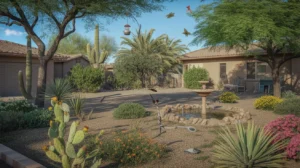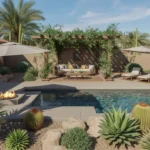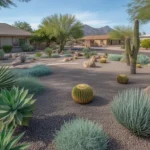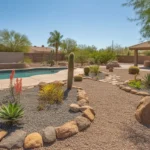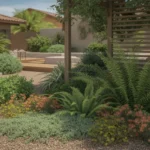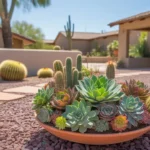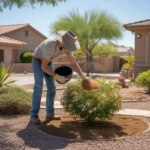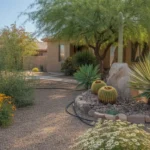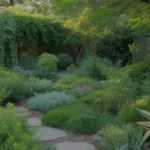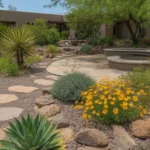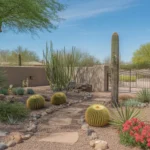Transforming your Gilbert yard into a wildlife-friendly oasis is a rewarding way to connect with nature and support local ecosystems. By incorporating native plants, water features, and thoughtful design elements, you can create a haven for birds, bees, butterflies, and other beneficial species. With a few strategic choices, your landscape can become a vibrant sanctuary that attracts and sustains the diverse wildlife of the Sonoran Desert.
Embrace Native Plants
The foundation of any wildlife-friendly yard in Gilbert is native plants. These hardy, drought-tolerant species have evolved to thrive in the intense heat and minimal rainfall of the desert. Not only do they require less water and maintenance than non-native varieties, but they also provide essential food and shelter for local wildlife.
Some top native plant choices for Gilbert yards include:
- Desert Milkweed – The fragrant clusters of white and pink flowers attract butterflies and serve as a host plant for Monarch caterpillars.
- Chuparosa – Hummingbirds flock to the tubular red blossoms of this shrub nearly year-round.
- Prickly Pear Cactus – The juicy fruits feed many desert animals, while the pads provide nesting sites for native bees and other insects.
- Velvet Mesquite – This hardy tree offers welcome shade, nesting spots for birds, and nutritious seed pods eaten by wildlife.
As one Gilbert landscaper notes, “Grouping native plants with similar water needs creates low-maintenance zones that mimic natural habitats. It’s an easy way to save resources while giving wildlife what they instinctively look for.”
Add a Water Source
Water is precious in the desert, and providing a reliable source will quickly make your yard a wildlife hotspot. Birds, bees, lizards, and small mammals all need fresh water to survive the intense Gilbert summers.
A simple birdbath or shallow dish serves smaller species, while a recirculating fountain doubles as a landscape accent. For a more natural look, create a small pond with a gentle slope so creatures can safely access the water. Surround it with native vegetation for shelter and perches.
Be sure to keep water features clean and filled, especially in summer. “Even a small amount of water makes a huge difference for wildlife,” a local birding expert advises. “Providing it consistently turns your yard into an oasis they’ll return to again and again.”
Provide Food and Shelter
Offering a variety of food sources and hiding spots completes the wildlife-friendly yard trifecta. Nectar-rich flowers feed hummingbirds and butterflies, while seed-producing plants nourish many birds and small mammals. Leave some areas of your yard untamed, with dense shrubs, rock piles, and brush to give small creatures places to nest and hide.
Supplement plantings with bird feeders stocked with quality seed mixes formulated for desert species. Hummingbird feeders are especially popular in Gilbert, where several migratory species pass through. Mount houses designed for favored birds like wrens and chickadees to encourage nesting.
“The key is diversity,” explains a Gilbert wildlife educator. “Aim for a good mix of food sources, shelter types, and native plants at different heights. This creates a complete habitat that supports wildlife through every season.”
Avoid Pesticides
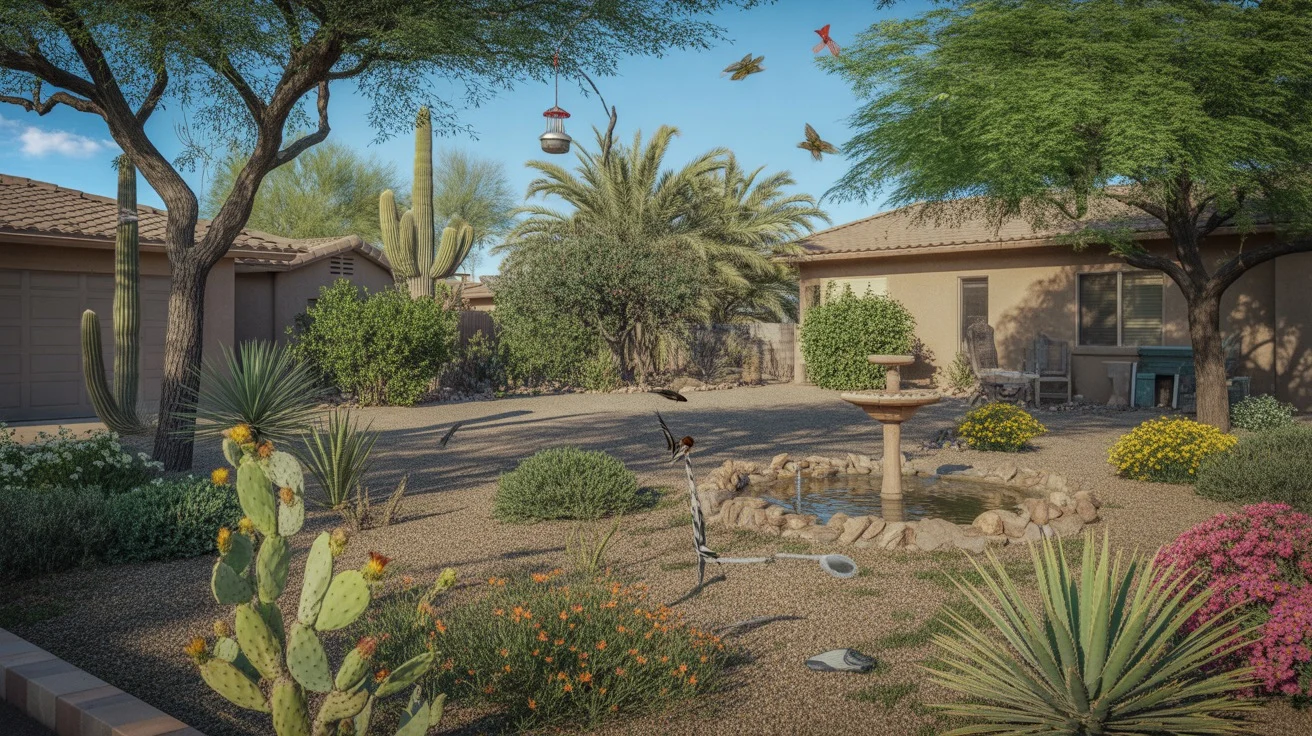
Pesticides and herbicides may keep your yard looking pristine, but they’re a disaster for wildlife. Insects are the foundation of the food web, and birds and lizards depend on them to survive. Many butterflies and native bees are also important pollinators that help your plants thrive.
Embrace a few holes in your leaves and some insect activity as signs of a healthy ecosystem. If certain pests get out of hand, look for targeted, non-toxic solutions like insecticidal soaps, horticultural oils, or manual removal. Better yet, let nature take its course – birds and beneficial insects will often keep troublesome bugs in check.
A Gilbert horticulturist sums it up: “In a wildlife-friendly yard, some insects are inevitable – and essential. Focus on working with nature, not against it. The more you can avoid chemicals, the better for every living thing.”
Minimize Turf Grass
Traditional lawns have their place, but wildlife prefers more diverse plantings. Turf grass doesn’t provide food, shelter, or nesting sites, and the fertilizers and frequent watering it requires can actually harm native species. Replacing some or all of your lawn with native groundcovers, shrubs, and trees is a big step toward a more wildlife-friendly yard.
If you do keep some turf, let it grow a bit taller and leave grass clippings in place to improve soil health. Mow less frequently and avoid chemicals to encourage insects and foraging birds. Consider converting unused lawn to native plant beds or replacing high-maintenance grass with water-wise gravel.
“Gilbert is shifting away from wall-to-wall grass to more desert-friendly yards,” notes a local landscaper. “It’s not just about saving water – it’s creating more interesting, sustainable spaces for people and wildlife. Even converting a small area makes a difference.”
Think Like an Ecosystem
The most wildlife-friendly yards feel a bit wild themselves. Tidy isn’t always best when it comes to attracting birds and butterflies. Aim for a healthy balance of native plants, water, food, and shelter, but let nature take the lead.
Leave some leaf litter under shrubs for lizards to lurk in. Let flowers go to seed for hungry birds. Embrace a few bare patches where native bees can burrow. The more your yard functions like a natural ecosystem, the more wildlife will feel at home.
As you design and maintain your Gilbert yard with wildlife in mind, savor the flashes of color and song that appear. From brilliant hummingbirds sipping nectar to shy pocket mice darting between cacti, each encounter is a reminder of the vital role your yard plays in supporting the Sonoran Desert’s wild residents.

